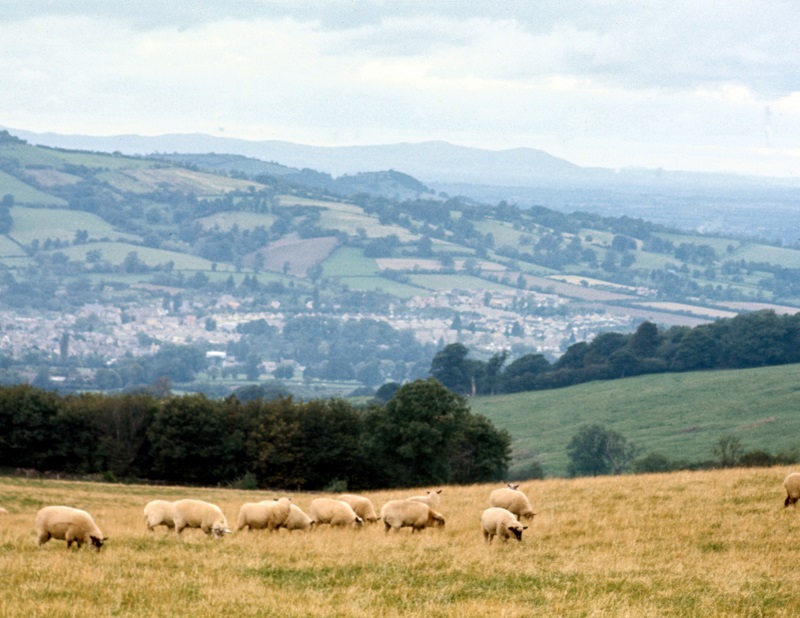Hedging in the landscape
See also: Financial hedging.

|
Contents |
[edit] Introduction
This article refers hedges as barriers comprising closely-spaced shrubs or trees that demarcate an area of land. However, the term ‘hedge’ or ‘hedging’ can also refer to an investment made to mitigate against the potential price movements of an asset.
A hedge is called a ‘hedgerow’ when it has been established for several years and incorporates larger trees, separating fields from roads and as a boundary between fields. Trees in a hedgerow can reach their full mature heights and it is estimated there are around 1.8 million in the UK.
Hedges are considered important historical elements of the British landscape, as valuable to wildlife as they are to humans. They can also help prevent soil erosion and flooding and can reduce pollution.
[edit] Uses of hedging
Hedging has been used historically to:
- Create enclosure
- Demarcate boundaries
- Protect crops or livestock
- Act as a windbreak
- Provide shade
- Provide privacy
- Provide security
- As a design element
- Provide amusement (when they form mazes or in the form of topiary).

|
[edit] Historical usage
Hedging was used as far back as Neolithic times (4000 BC – 2000 BC) to enclose land for cereal crops and was used as an element of landscape throughout the medieval age, right through to the 18th and 19th centuries when they were used to enclose heaths and uplands. Throughout these periods, hedges have also been a much-exploited source of firewood. It has been estimated that some hedgerows in the UK, Ireland and Low Countries may be as much as 800 years old.
In making the transition from low intensity to high-intensity farmed land, many hedgerows have been removed, thereby creating larger fields for mechanised farming and easier sowing and harvesting. With the advent of modern agricultural technology, hedgerow removal has been ongoing in the UK since the end of the first world war. This process has slowed in recent years, first, as cheap food imports have reduced the demand on British farming; second, as agricultural policy has thrown the spotlight on the environmental consequences of farming (damage to wildlife, flooding and soil erosion), encouraging hedgerow conservation and replanting.
[edit] Composition
The species used to form hedges are often a random mix although they can also comprise several or just one type. The majority of British hedging comprises hawthorn and blackthorn shrubs (both used to enclose livestock) and hazel, often in combination. Other species that can be used and which can grow to considerable heights include beech, holly, oak, willow and ash.
Hedges may also be used as a formal element of garden design, typically comprising more dense foliage, such as box, yew and privet.

|
[edit] Planning considerations
A hedge may be the subject of a legal dispute between neighbours if it is tall enough to impinge on one party’s right of light.
As well as a host of other important features, information on existing hedges and trees is normally required as part of an application for outline planning permission.
When contemplating a development, it is important to remember that trees in a hedgerow may be protected by a tree preservation order (TPO), or conservation area designation, but hedges generally are not afforded such protection under the law.
[edit] Important hedgerow
High Speed Rail (Crewe – Manchester) Environmental Statement, Glossary, abbreviations and references, published by the Department for Transport in 2022, defines an important hedgerow as: ‘A hedgerow that is at least 30 years old and meets criteria set out in the Hedgerow Regulations 1997 (includes both ecological and historic environment criteria).’
[edit] Related articles on Designing Buildings
Featured articles and news
The UK's Modern Industrial Strategy: A 10 year plan
Previous consultation criticism, current key elements and general support with some persisting reservations.
Building Safety Regulator reforms
New roles, new staff and a new fast track service pave the way for a single construction regulator.
Architectural Technologist CPDs and Communications
CIAT CPD… and how you can do it!
Cooling centres and cool spaces
Managing extreme heat in cities by directing the public to places for heat stress relief and water sources.
Winter gardens: A brief history and warm variations
Extending the season with glass in different forms and terms.
Restoring Great Yarmouth's Winter Gardens
Transforming one of the least sustainable constructions imaginable.
Construction Skills Mission Board launch sector drive
Newly formed government and industry collaboration set strategy for recruiting an additional 100,000 construction workers a year.
New Architects Code comes into effect in September 2025
ARB Architects Code of Conduct and Practice available with ongoing consultation regarding guidance.
Welsh Skills Body (Medr) launches ambitious plan
The new skills body brings together funding and regulation of tertiary education and research for the devolved nation.
Paul Gandy FCIOB announced as next CIOB President
Former Tilbury Douglas CEO takes helm.
UK Infrastructure: A 10 Year Strategy. In brief with reactions
With the National Infrastructure and Service Transformation Authority (NISTA).
Ebenezer Howard: inventor of the garden city. Book review.
The Grenfell Tower fire, eight years on
A time to pause and reflect as Dubai tower block fire reported just before anniversary.
Airtightness Topic Guide BSRIA TG 27/2025
Explaining the basics of airtightness, what it is, why it's important, when it's required and how it's carried out.
Construction contract awards hit lowest point of 2025
Plummeting for second consecutive month, intensifying concerns for housing and infrastructure goals.
Understanding Mental Health in the Built Environment 2025
Examining the state of mental health in construction, shedding light on levels of stress, anxiety and depression.
The benefits of engaging with insulation manufacturers
When considering ground floor constructions.
Lighting Industry endorses Blueprint for Electrification
The Lighting Industry Association fully supports the ECA Blueprint as a timely, urgent call to action.
























Comments
To make a comment about this article, click 'Add a comment' above.
Separate your comments from any existing comments by inserting a horizontal line.
Fascinating summary.